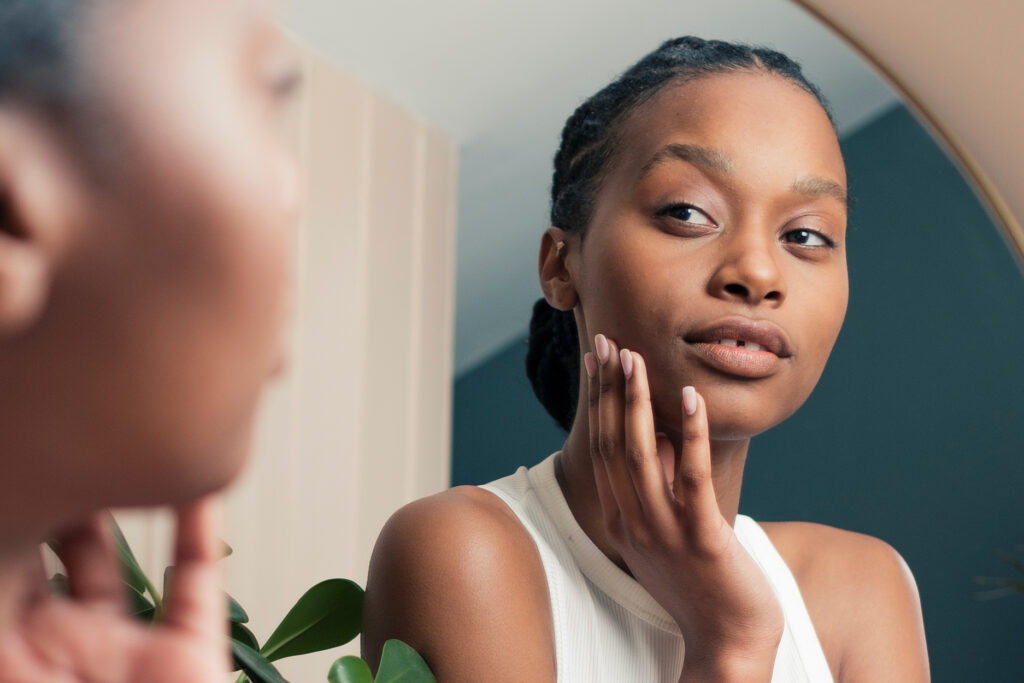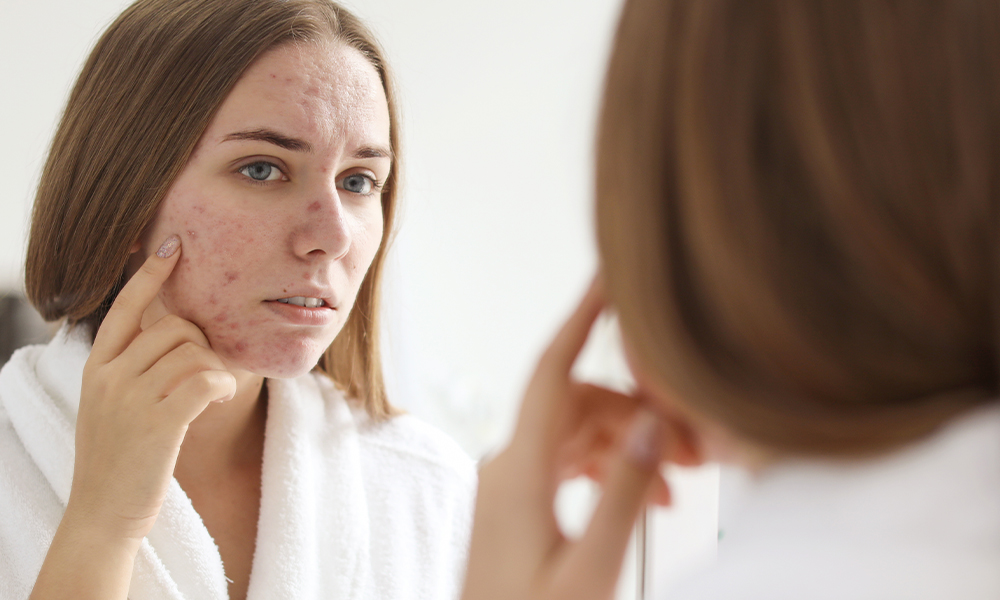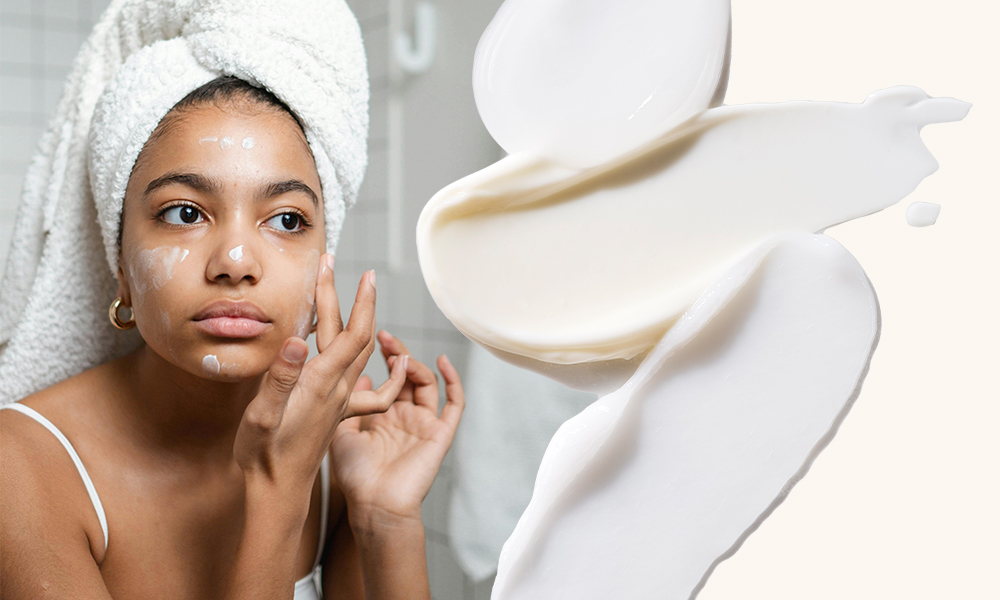Ask A Dermatologist: Do I Have Acne Or Rosacea?

Link to share article here:
Why Does My Skin Change With My Menstrual Cycle?
Ever notice that acne often decides to make an appearance just before your period hits? As if we needed one more thing to think about. Throughout your menstrual cycle, your hormone levels change frequently – and that can show on your face.
While hormonal acne as a teenager is mostly in the T-Zone, adult hormonal acne tends to be commonly found around the jaw, chin and lower cheeks. Hormonal acne can manifest as different types of spots, like blackheads, whiteheads, papules, pustules or under-the-skin cysts.
Fluctuating hormones during your menstrual cycle can cause hormonal acne, as can the menopause and polycystic ovary syndrome (PCOS). Just a quick word on PCOS – if your hormonal acne is combined with irregular periods and excessive hair growth, talk to your doctor as these symptoms can be indicative of the condition.
How Hormones Change During Your Menstrual Cycle
The menstrual cycle usually lasts for 28 days, starting with the first day of your period. Over the course of that month, your skin can change quite a bit, going from being relatively acne-free in the second week of your cycle, only for those annoying cystic spots to return around the same time PMS starts kicking in for the run-up to your period. So, what’s actually happening?
Days 1–14
On day 1, when you start your period, your hormones start to shift. Oestrogen levels begin to climb until they are dominant over progesterone. Your skin should improve over the course of your period and remain relatively stable the week after.
Days 14–28
Once we hit day 14, the cycle begins to invert. Progesterone levels rise until your body has more progesterone than oestrogen. This increases sebum production, so you may notice your skin is oilier, and acne starts to appear.
So, We Know Why It Happens. But How Do We Deal With It?
If you’re worried about hormonal acne and looking to keep it at bay, active ingredients are your friend. A stripped-back yet effective skincare routine will help to keep your skin happy and healthy. Then, if your hormones do go a little haywire, you’ll be ready to take control.
Here are some of the gold standard ingredients dermatologists commonly use to treat inflamed skin and spots.
Clindamycin
This prescription-only ingredient soothes angry red spots and calms swelling. Clindamycin works by stopping the growth of acne-causing bacteria called propionibacterium acnes, reducing inflammation and promoting skin healing.
Tretinoin
Tretinoin is a type of retinoid only available on prescription. 20 times stronger than retinol, it’s a great multitasker – but when it comes to acne it’s one of the big-hitters. Not only does it make pores less visible and improve skin texture, but it also fights acne by increasing skin cell turnover.
Azelaic Acid
Remember when we all thought the St Ives Apricot Scrub was the best exfoliator ever? Well the skincare world has moved on, and chemical exfoliators are far kinder to your skin and a huge help when it comes to hormonal acne. Azelaic acid’s antibacterial properties mean it can effectively target cutibacterium acnes. It also soothes inflammation and encourages skin cell turnover, helping to unclog pores, another key driver of acne.
Niacinamide
Niacinamide is another ingredient that’s getting a superstar status in the skincare world. It improves hyperpigmentation, moisturises the skin and regulates the skin’s oil production, which helps keep acne under control. Since some active ingredients, like tretinoin, can cause mild irritation, dermatologists often recommend pairing them with niacinamide as it increases ceramide production and mitigate side effects.
The bottom line
Ultimately, everyone who menstruates, whether you’re a woman, trans man or non-binary, can struggle with hormonal acne with their cycle. Trans men who choose to undergo hormone therapy may also find that acne worsens initially due to the increased testosterone levels, but that generally improves with time.
While hormonal contraception can be helpful for many, it isn’t always appropriate for everyone. A reliable skincare routine, using a carefully chosen combination of active ingredients, will stand you and your skin in good stead throughout the month – and will help to control any outbreaks in the week before your period as oestrogen levels drop. Focus on building a skincare routine that works for you all month, and you shouldn’t need to change your routine to tackle hormonal acne.
And, if you want a skincare routine formulated just for you, Skin + Me’s pharmacist clinicians can analyse your skin to design a personalised regime. Start your skin journey here.
New to Skin + Me? Get your first month of personalised skincare for £4.99 with promo code DOSE – complete our quick consultation here.
Looking for a routine refresh? Add the Dream Routine to your Skin + Me subscription.
In need of a restock? Head to The Skincare Shop for one-off purchases of your Routine Essentials.



